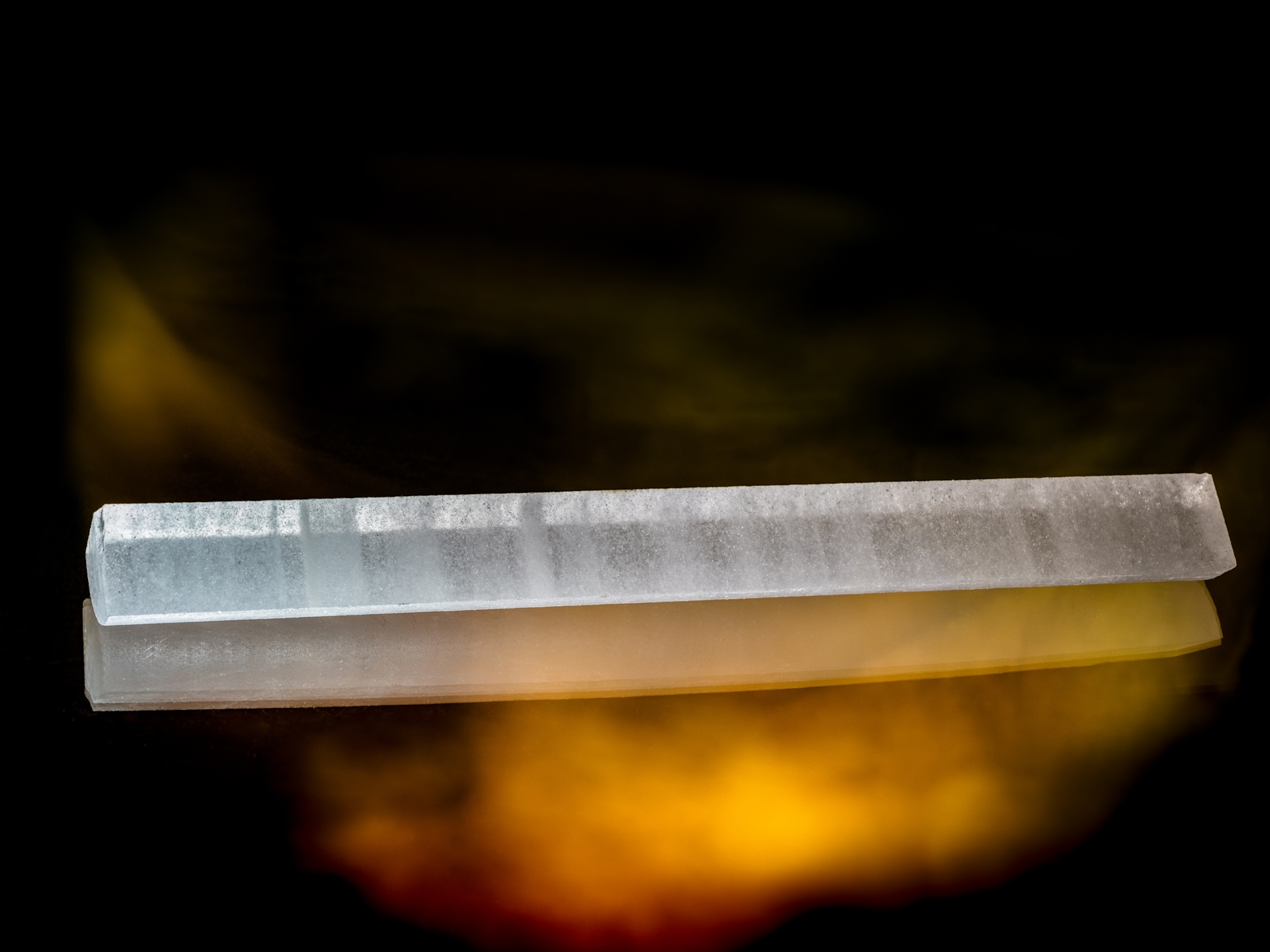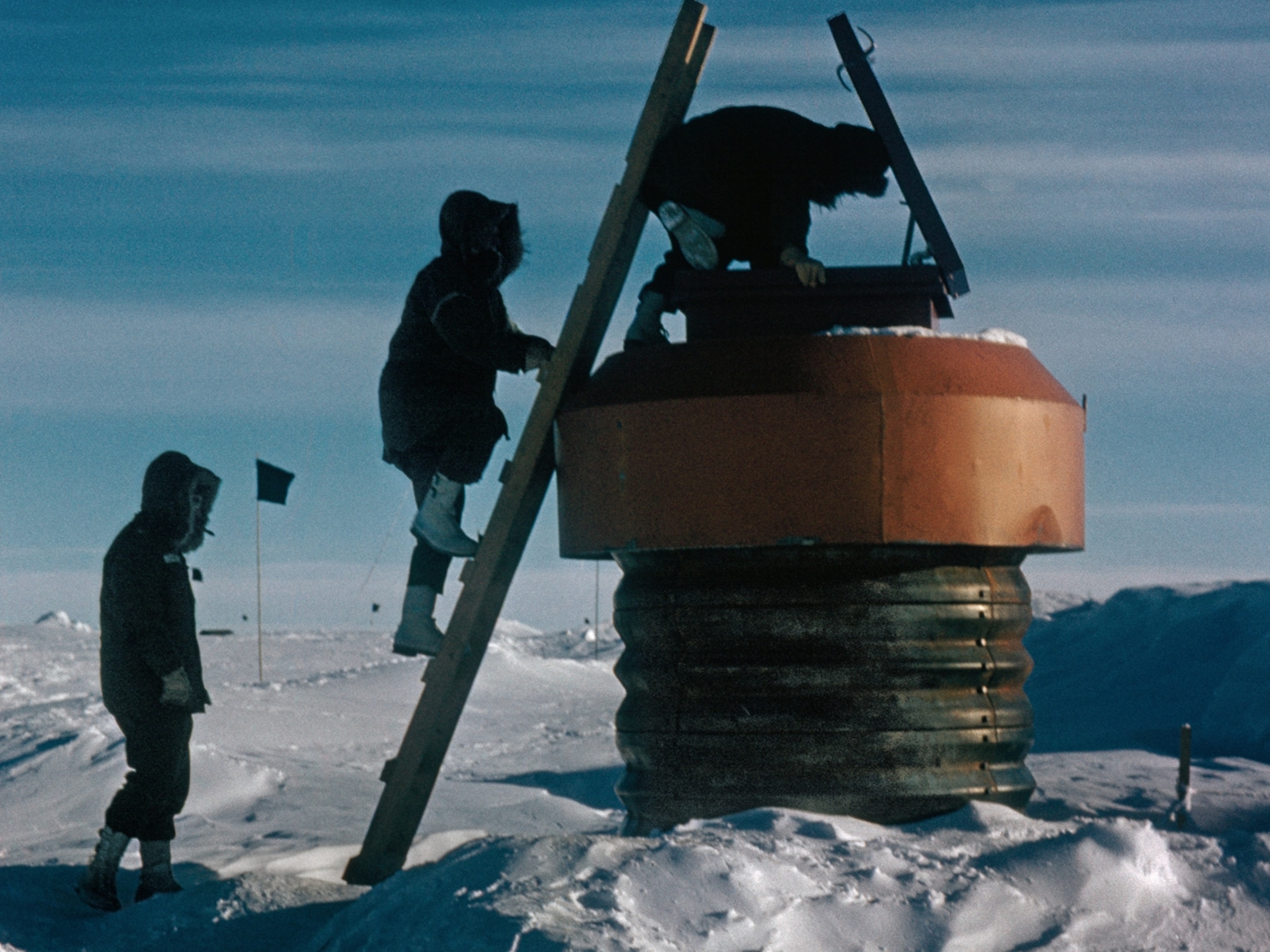
"Crazy Green" Algae Pools Seen in Antarctic Sea
Water's teeming life "exceeds all expectations," scientist says.
"Crazy green" pools teeming with life have been found among remote Antarctic sea ice, scientists say—and they may be a global warming boon.
Observed in the little-studied Amundsen Sea (see map), the brilliant blooms owe their colors to chlorophyll, a pigment in various types of phytoplankton, or tiny algae. Algae-eating zooplankton, small crustaceans called krill, and fish and shrimp larvae also thrive in the area.
A recent scientific expedition studied the blooms while plying the Amundsen Sea's polynya, a region of seasonally open water surrounded by sea ice.
Often hundreds of miles wide, polynyas are nutrient-rich "oases" that offer refuges for animals big and small, according to Patricia Yager, chief scientist for the Amundsen Sea Polynya International Research Expedition (ASPIRE), which is funded by the U.S. National Science Foundation and the Swedish Polar Research Secretariat.
The open pockets occur for two reasons: because wind blows chunks of ice away from the coast, and because warm air or an upwelling of warmer water melts sections of ice away. (Related: "New Zealand Earthquake Spurs Giant Glacier Collapse.")
When summer sea ice melts, it can release micronutrients into the ocean that supercharge algae blooms. Micronutrients are trace amounts of elements, such as iron, that are essential for plant growth.
As glaciers and sea ice in western Antarctica begin to melt due to global warming, a greater influx of micronutrients may flow into the oceans and fuel bigger algae blooms, Yager said in an interview.
Such an algae explosion may actually be a climate boon, since the plants gobble up more of the greenhouse gas carbon dioxide—but only to a point, she warned.
(Read about how warming is affecting Antarctic sea ice.)
Polynya Shows "Exceptional" Productivity
Thanks to remote sensing data, Yager and colleagues have known since 2003 that the Amundsen polynya is one of the oceans' most productive.
But "bottom line, the satellite can just see the surface—can only see where the ice is not," Yager noted. "That's not the whole story."
The recent expedition—which took place from November to January aboard two research icebreakers—was among the first to sample the polynya firsthand.
Samples of the polynya's surface waters revealed the pools held as much as 45 micrograms of chlorophyll per liter. That's five times greener than parts of the Amazon River plume, the nutrient-rich region where the Amazon empties into the Atlantic.
Such a discovery "exceeds all expectations," Yager wrote in a preliminary research report.
It's "the greenest water I've seen in the world," she said.
It's not unusual to find high amounts of chlorophyll in the Amundsen Sea, according to Maria Vernet, a research biologist at Scripps Institution of Oceanography in La Jolla, California.
That's because polynyas' waters are regularly infused with fresh water from melting sea ice, and they receive plentiful sunlight—both fruitful conditions for life. For instance, algae often thrive in freshwater "lenses"—layers of fresh water up to 130 feet (40 meters) deep that sometimes sit on top of denser seawater.
But "seeing something more than 30 [micrograms of chlorophyll] is exceptional, and seeing something more than 40 is very exceptional," said Vernet, who was not involved in the expedition. "I've only seen it a few times."
Grazers and Composters Affect Carbon Balance
The Amundsen polynya is also taking up carbon dioxide from the atmosphere at an extraordinary rate, expedition scientist Yager said. (See a greenhouse effect interactive.)
Carbon dioxide levels in the polynya were the lowest Yager had ever seen—100 parts per million, compared to 390 parts per million in Earth's atmosphere.
That "means the biology's working really fast" to consume the gas, she said.
During photosynthesis, algae use energy from sunlight to combine carbon dioxide with water and form carbon.
However, algae can be eaten by zooplankton "grazers," Yager noted, which release carbon dioxide back into the atmosphere during respiration.
What's more, in what Yager calls the "compost pile of the ocean," bacteria also decompose some of the dead algae, turning carbon back into carbon dioxide.
Overall, there's a constant tug-of-war between algae, bacteria, and zooplankton in the polynya that may limit how much atmospheric carbon dioxide actually remains in the ocean.
For instance, sometimes algae explode in number, then die, sinking to the bottom and taking the carbon with them. But other times there are lots of grazers and bacteria at the surface, and the carbon dioxide escapes back into the atmosphere soon after it enters the ocean.
This carbon cycle can be influenced by forces such as wind and changing sea-ice cover, noted Lisa Miller, a marine biogeochemist at Fisheries and Oceans Canada.
High winds can suffuse more carbon dioxide into the surface waters, where the gas is more readily taken up by algae. Likewise, as sea ice builds up in the winter, it can prevent carbon from bubbling back into the atmosphere, Miller said.
Salty brine also tends to accumulate under sea ice, making surface waters denser and helping dead algae—and carbon—sink to the seafloor.
Polynyas a Climate Boon—For Now
Overall, expanding polynyas are good for Earth's climate because they trap carbon, Miller said—but there's a limit to that.
That's because, if the world continues to warm, polynyas will disappear along with the sea ice, expedition leader Yager noted. Without the ice trapping them in, micronutrients from meltwater will simply disperse in the open ocean.
"It's a finite thing—the polynyas can only get so much bigger until they're totally gone altogether," Yager said.
Likewise, the unusually green polynya doesn't necessarily point to a trend in more and bigger algae blooms. More remote sensing data and research cruises are needed to see if the Amundsen polynya is becoming more productive, Scripps's Vernet noted.
Global warming itself is another complicating factor, Vernet pointed out, since melting sea ice has allowed scientists more access to previously icebound areas.
"That is a little bit of the tricky thing—are we now seeing [a phenomenon] because we can see it, or has it always been there?" she said. "That's always a question you have to keep in mind when you find something new."
Even so, Yager said her research has at least started to unravel how climate change affects the ocean. (Test your climate change knowledge.)
"The Amundsen Sea," Yager wrote in her last field report, "has fewer secrets."








